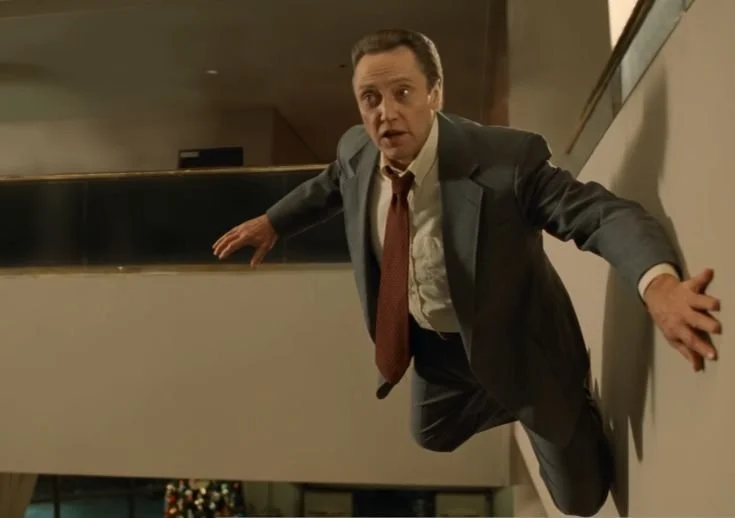Music videos offer a unique medium for artistic expression, combining the emotive power of music with the visual impact of film. The fusion of these two elements can create an immersive, multi-sensory experience that transcends the sum of its parts. When visuals and music are skillfully combined, they can evoke strong emotions, stimulate the imagination, and transport viewers to new worlds. This is the art of music video production.
Dive into the world of music video production and explore the works of visionary directors Chris Cunningham, Spike Jonze, and Michel Gondry. In this blog post, we will analyze the storytelling and editing techniques in Aphex Twin's "Windowlicker", Madonna's "Frozen", Fatboy Slim's "Weapon of Choice", and Björk's "Bachelorette" to discover what makes these music videos so memorable.
Pre-Production: Concept, Budget, and Choosing a Director
Before the cameras start rolling, there's a critical pre-production stage that involves concept development, budgeting, and choosing a director who can bring the artist's vision to life. Chris Cunningham, Spike Jonze, and Michel Gondry have each made their mark in the music video world with their unique approaches to storytelling and editing techniques.
Aphex Twin's "Windowlicker" by Chris Cunningham
Cunningham's work on Aphex Twin's "Windowlicker" is a prime example of his distinctive style. The video begins with an extended dialogue scene before transitioning into a surreal and darkly humorous narrative. Cunningham's signature use of editing techniques is showcased when the beat drops and the dancers' movements synchronize perfectly with the music. The distorted faces of the dancers and the elongated limousine add to the video's bizarre atmosphere, reflecting the experimental nature of Aphex Twin's music.
Madonna's "Frozen" by Chris Cunningham
In Madonna's "Frozen", Cunningham uses a stark, desolate landscape to tell a story of transformation and rebirth. The haunting visuals, such as the black fabric blowing in the wind and the sudden appearance of doves, are combined with editing techniques, creating a powerful and mesmerizing experience for the viewer. As the song reaches its climax, the fast cuts between Madonna's different forms emphasize the theme of metamorphosis.
Fatboy Slim's "Weapon of Choice" by Spike Jonze
Spike Jonze is known for his whimsical and inventive approach to storytelling, as showcased in Fatboy Slim's "Weapon of Choice". The video stars Christopher Walken dancing through an empty hotel, with Jonze's editing techniques punctuating each beat and perfectly complementing the music. The gravity-defying choreography, such as Walken's effortless glide down the escalator, highlights the playful tone of the song and provides a visual treat for viewers.
Björk's "Bachelorette" by Michel Gondry
Michel Gondry brings his inventive storytelling and visual wizardry to Björk's "Bachelorette". The video tells a story within a story, with Björk finding a book that details her life and future. Gondry uses editing techniques to create a seamless connection between the various layers of the narrative. For instance, when the forest comes to life and the tree branches start to sway in time with the music, the editing enhances the magical atmosphere of the video. The final scene, where the miniature theater collapses in on itself, symbolizes the cyclical nature of the story and leaves a lasting impression on the viewer.
Production: Set Design, Wardrobe, and Filming Techniques
During the production stage, the director's vision comes to life through set design, wardrobe, and filming techniques. Each of the mentioned directors has their unique approach to these elements, creating a visual language that sets their work apart.
For example, in "Windowlicker," Cunningham uses a combination of urban settings and futuristic elements, such as the elongated limousine, to create an unsettling atmosphere. In contrast, Jonze opts for a more minimalist approach in "Weapon of Choice," using the empty hotel as a canvas for Christopher Walken's captivating dance performance. Gondry's "Bachelorette" features lush forest scenes and intricate set designs that emphasize the fantastical elements of the narrative.
Post-Production: Story and Editing Techniques, Visual Effects, and Color Grading
The post-production stage is where the magic happens. Here, story and editing techniques come together to create a cohesive narrative that enhances the music. Visual effects and color grading further refine the look and feel of the video, ensuring that every frame tells a story.
For instance, the visual effects in "Frozen" elevate the sense of mystique and transformation, with Madonna's various forms seamlessly blending into one another. In "Bachelorette," color grading is used to differentiate between the layers of the narrative, with warmer tones for the "real world" and cooler hues for the story within the book.
Emphasizing the Importance of Organization in Music Video Production
Organization is crucial in music video production, as it can make or break a project. A well-organized production process ensures that deadlines are met, budgets are maintained, and the final product is of the highest quality.
Here are some tips for working with a team and ensuring a successful music video production:
Communication: Keep the lines of communication open between all team members. Make sure everyone is on the same page regarding the project's goals, deadlines, and expectations.
Collaboration: Encourage collaboration among team members. Each person brings unique skills and ideas to the table, and working together can lead to innovative solutions and an overall better final product.
Project Plan: Create a detailed project plan that outlines every stage of the production process, from concept development to post-production. This will help keep the team on track and ensure that no crucial details are overlooked.
Budget Management: Establish a budget early in the pre-production stage and monitor it closely throughout the project. Make adjustments as needed to ensure the production stays on track financially.
Flexibility: Be prepared to adapt and adjust when unexpected challenges arise. Flexibility is essential in music video production, as unforeseen issues can often lead to creative solutions.
By incorporating these strategies, you'll be well on your way to producing a successful music video that showcases the power of story and editing techniques. Remember, organization is key to ensuring a smooth production process and a final product that leaves a lasting impression on viewers.
That’s a wrap!
Music video production is an art form that requires a deep understanding of storytelling, editing techniques, and collaboration among talented professionals. By studying the works of iconic directors like Chris Cunningham, Spike Jonze, and Michel Gondry, you can gain valuable insights into the creative process behind some of the most memorable music videos of all time. With careful planning and organization, you too can create captivating music videos that inspire and leave a lasting impression on viewers.
The power of music videos lies in their unique ability to combine visuals and music, creating an emotive and memorable experience. As you embark on your journey in music video production, remember to stay true to your vision, collaborate with your team, and always be open to new ideas and techniques. The world of music videos is a boundless canvas, waiting for you to make your mark.





